The
World Trade Center, as it existed, say 1970 to 2001, was truly one of
my favorite places on earth. Others I know describe it as “ugly” or
“blocky,” or, in the language of The Atlantic or The New York Times, “anti-urban,” but they’ll never convince me.
I
watched it most days for many years, key years for me, childhood,
adolescence and young adulthood. Somehow, is it possible? I have a
memory of my father, New York World Telegram & Sun
in his hands, reading to me about how people feared that the television
signals from the Empire State Building would get scrambled when they
echoed off these not yet built super towers.
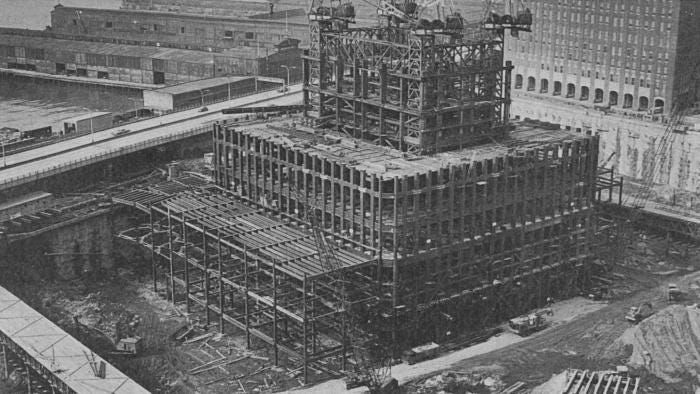
I remember a fascination with the ‘seawall on land’ — what I understood the slurry wall
to be, with the ‘straw within a straw’ framing system, with those
massive exterior trusses, with the whole giant platform underground…
So
I watched it rise. Maybe it was, for me, a symbol of ‘my city,’ new and
challenging all the old. The elegant brick skyscrapers we’d inherited,
the Empire State, the Chrysler Building, Rockefeller Center, Daily
News Building, the Wall Street towers — the Bank of the Manhattan Company Building,* Cities Service Building, One Wall Street
— were the work of my father’s childhood, and his generation were
justifiably proud. The sleek postwar creations, Levert House, the
Seagram’s Building, Chase Manhattan Plaza, were also that generation’s
work — part of their triumph in the war and domination of the world.
Buildings like the United Nations, the reclad/rebuilt Allied Chemical Tower, the GM Building seemed to belong to the real baby boomers, our older siblings and cousins who grew up with moms at home.
The World Trade Center, though, was all ours.
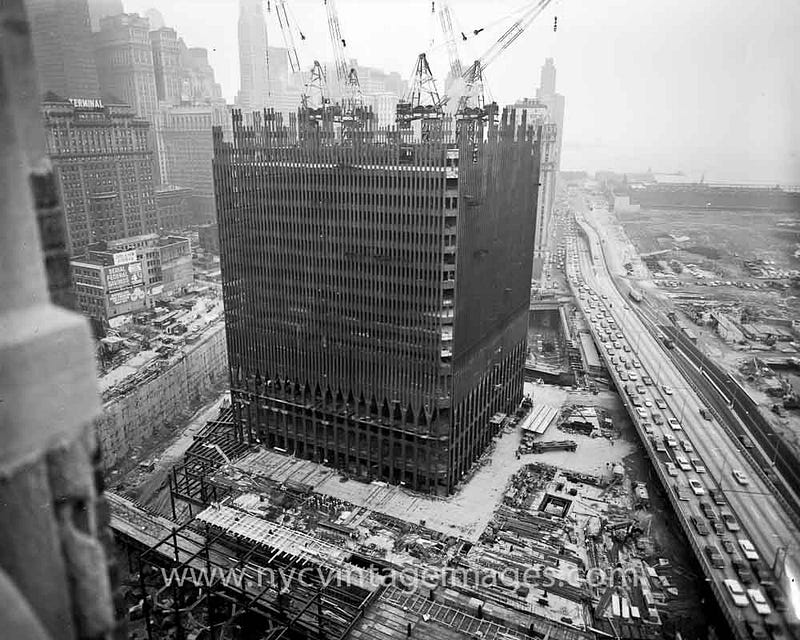
It
was huge and aggressive and incomprehensible in scale. As it began to
be clad in curtain wall it was also postmodern before any of us knew the
word, it’s tracery owing more to the Woolworth Building — that tower
displaced in the city’s heart by the structures of our parents’
childhood — than to anything since. It became changeable across the
changing light of the day, it wasn’t a solid solid.
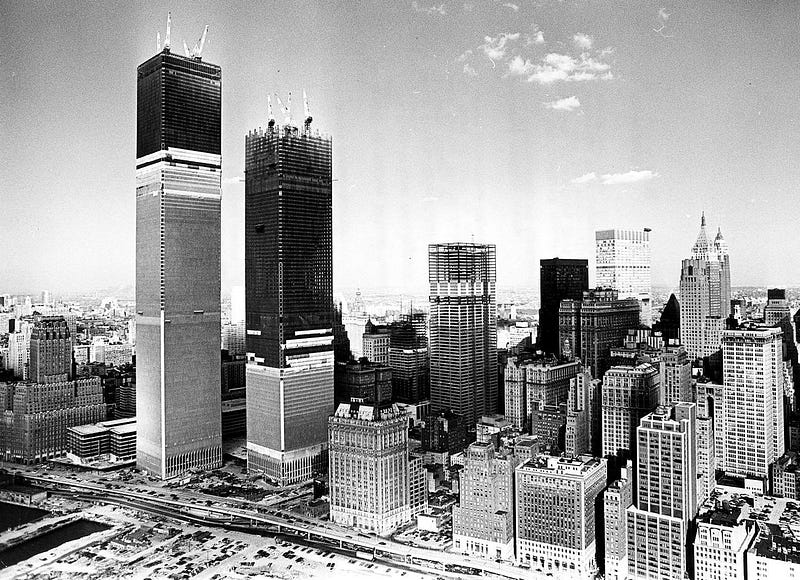
Maybe most importantly, it was a beacon, calling us back to the city so much of the previous generation had fled.
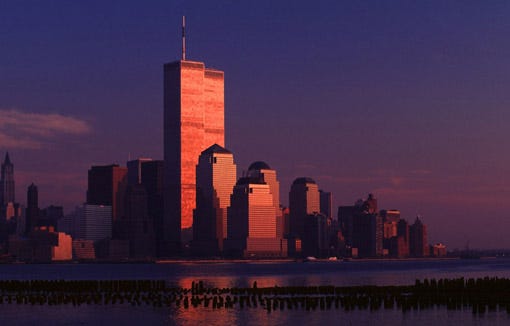
And
when built it was an enormous playground, from the mall — ahh to hang
out watching the 6 pm human waterfall at PATH Square — to the plaza, to Windows on the World, where faux sophistication and the greatest views ever could be had for the cost of an overpriced drink.
OK then. Nostalgia.
History
is cruel and my father’s landmarks stand and mine is gone. And my
response to that loss was typical: rebuild it as it was, stop calling it
‘the twin towers’ or ‘north tower’ (to know it was to say “Trade
Center” and “One” or “Two”), put the same restaurant back on top…
Nostalgia
of course leads to the rejection of the new — an almost unconscious
anger toward the world moving on. But cities are dynamic for reasons
good and bad. Like many things…
I
am glad that my son knew the Trade Center that was. I am glad he looked
out from up top and looked up those staggering aluminum clad sides…
…but
now my kid has taught me to love the new One World Trade Center, to
enjoy the park, to marvel at the complexity of the new design. And he
taught me that with just a few simple statements that made me look anew.
He
started simply by saying that the new One World Trade Center — then
just a forming skeleton — ”wasn’t bad. It would be a great building in
another place, maybe Houston.” And with that I looked at the shape
again, trying to put my generalized disdain for architects Skidmore Owings Merrill to bed for a moment.
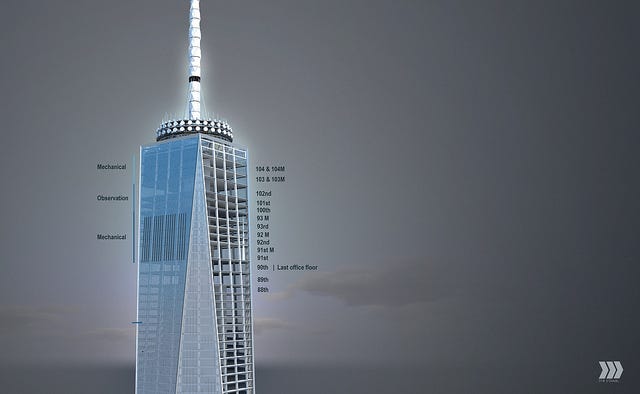
Next,
glass walls in place, he encouraged me to stand near the phone company
building and look up. And I did, and found myself enthralled.
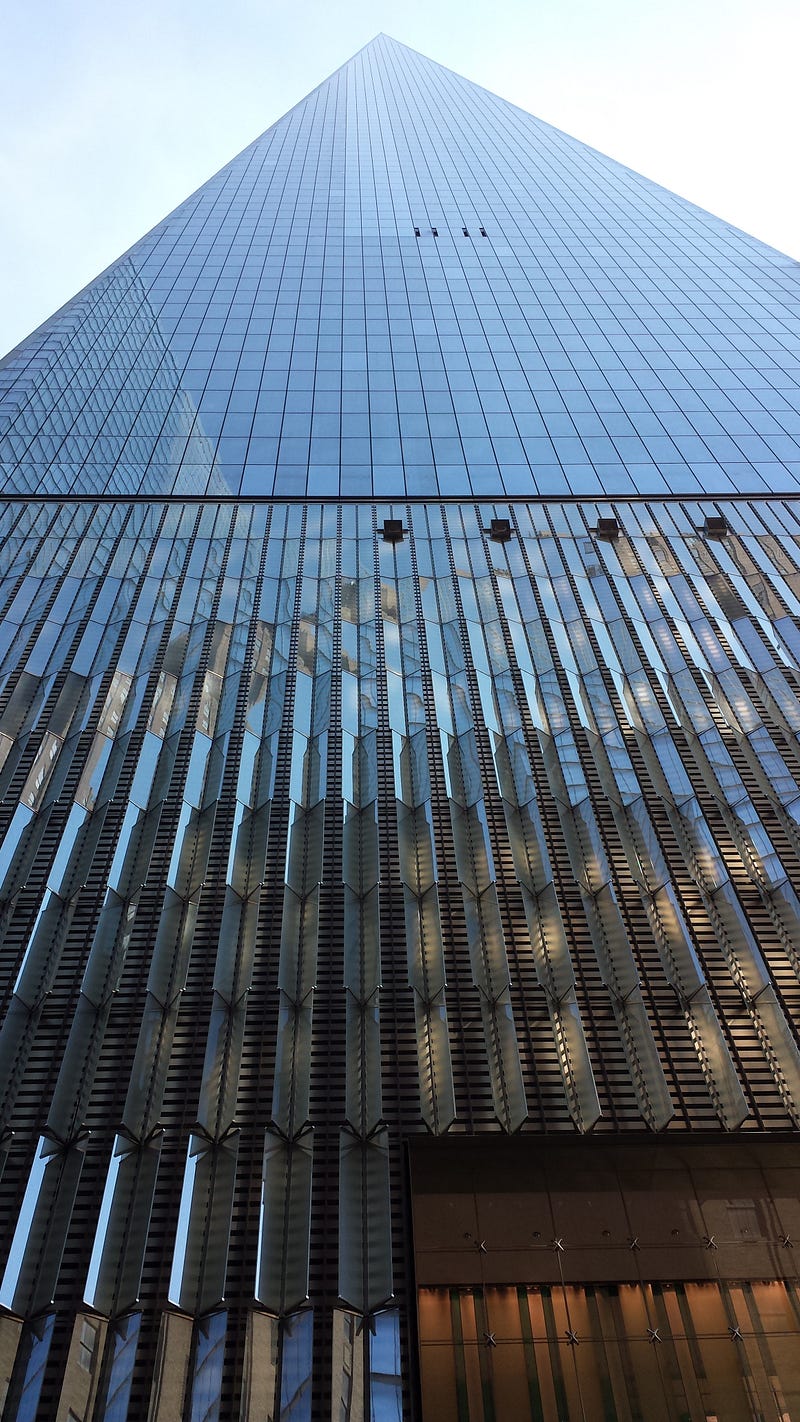
Once
here, at the magical infinite tower, I could begin to find all the
rest. I could start to see the wheel of towers — the not-quite-lost
magnificence of Daniel Libeskind’s plan —
emerging around the park and the great lost dinosaur skeleton on
Santiago Calatrava’s train station. I could see the memorial
park — assuming the morbid museum will be forgotten — becoming the kind
of gentle green spot downtown has needed so much more of. (The true success of a memorial can only be measured after all who remember the actual event have gone.)
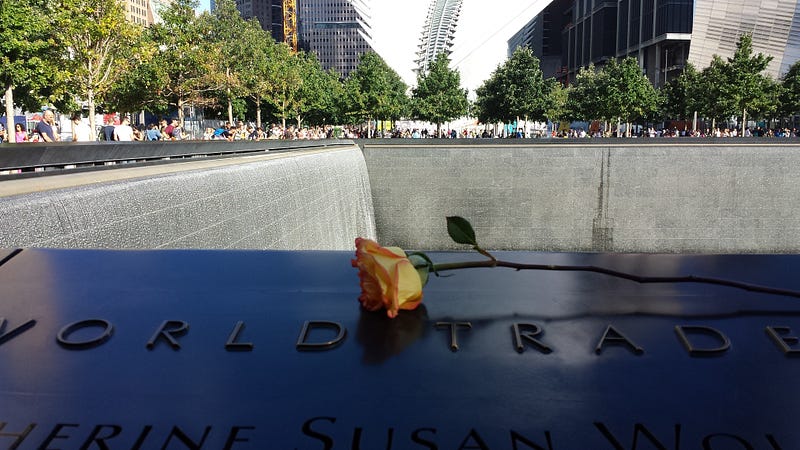
A parable, of course.
There
are so many levels of learning science here. From my passion for the
gigantic statement of a new day I learned history, I learned the science
of construction, I found a love of math in the structure. I began an
understanding of semiotics — the signs and symbols that create cultural
comprehension — that has stayed with me for life. I learned the choices
of urban spaces and the patterns of city movement.
Imagine what I might have learned if the schools I attended had supported passion-based learning.
From its destruction I learned something much more deeply about those symbols, but that’s another story.
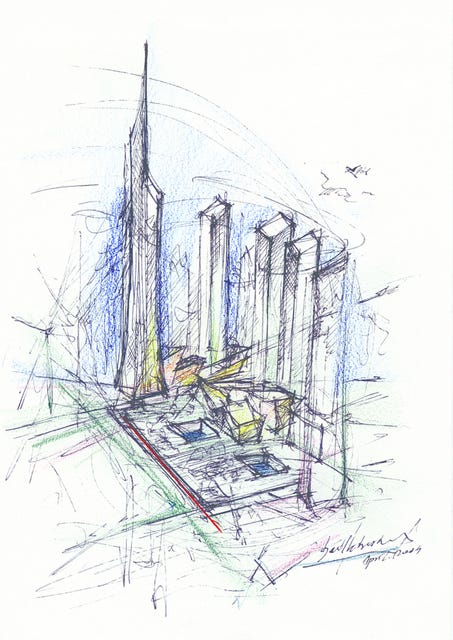
And
from my conversion on the new building, my shift from calling it “a bad
Houston skyscraper,” the slow acceptance of the loss of both the
original buildings and the loss of the pure artistry of Libeskind’s vision, I learned about my own struggles with the impact of change.
So
much of what continues to haunt education rides on the back of cultural
remembrance and image preservation. It begins, all too often with
teachers teaching as they were taught. And it ends with the preservation
of crap like hall passes and bells ringing, late slips and petty rules,
because, “we’ve always had them,” and, “we don’t want to change
everything right away.”
But
you know… sometimes you do. I have friends who will bemoan the loss of
the ‘Radio Row’ neighborhood to the first World Trade Center. But the
towers rose and Philippe Petit made them instantly a part of the rich
fabric of the city. They were beacons in a dark time.
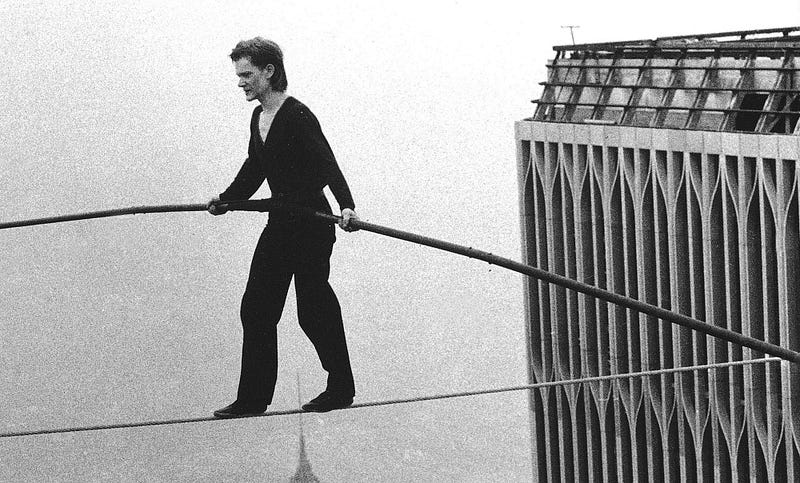
The
loss of that complex was an incalculable tragedy, but, in its wake is a
new city with new aspirations and perhaps much higher goals.
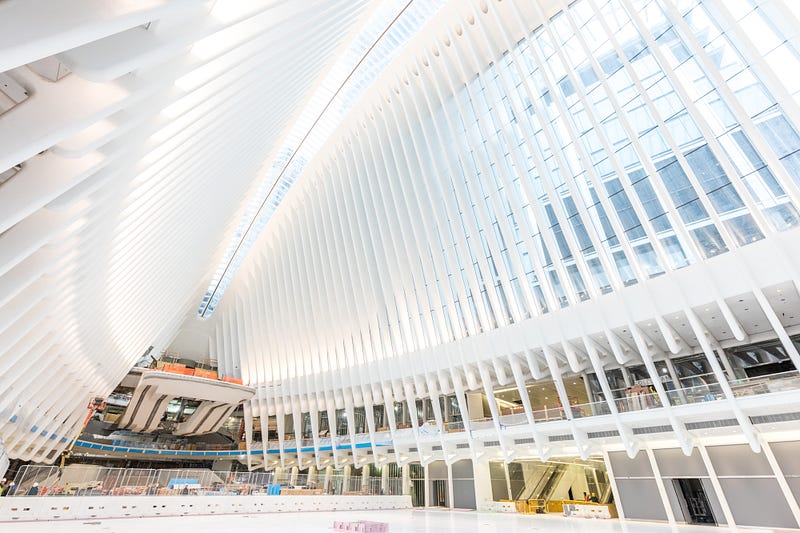
We
were not born to live in the past. And if we are educators we simply
cannot afford to live even in the present. The future is our children’s
time, and we must be brave enough, every day, to help to take them
there.
- Ira Socol
1 comment:
I liked:
"If we were educators we simply cannot afford to live even in the present".
And the New New York City is great.
Post a Comment